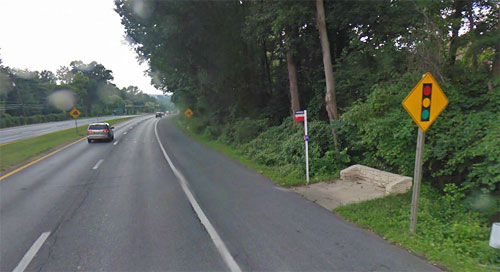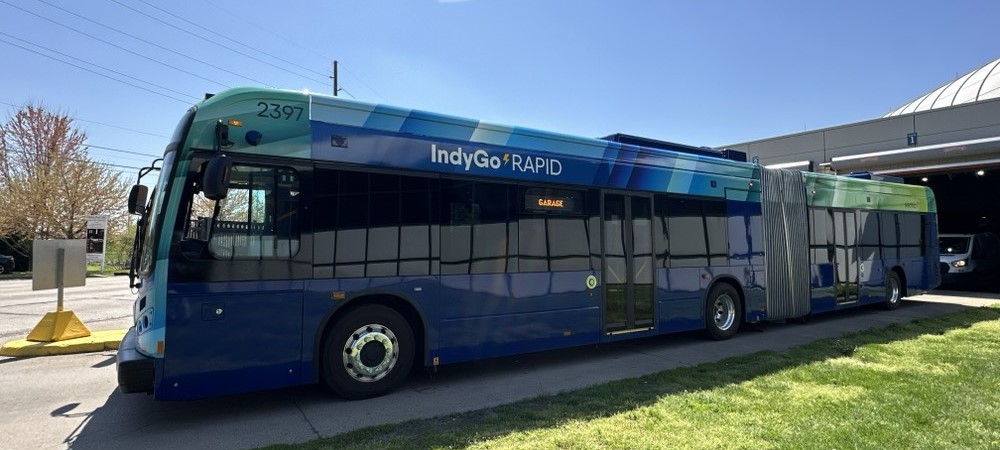
This week, complete streets advocates came together in Washington, DC, to celebrate the passage of the 500th complete streets policy. That happened in Memphis more than seven months ago, but perhaps the delay in marking the occasion was fortuitous: There are now at least 25 more policies to celebrate.
Each of these policies is really just the beginning of a process of making change in how streets are designed. Those policies need to be implemented, and the idea of accommodating all street users -- cyclists, transit riders, pedestrians, people in wheelchairs, children -- needs to become second nature to city planners and engineers. Still, the beginning of 525 processes signals a true shift away from road design that’s exclusively for automobiles.
Complete streets policies have passed in 29 states (including the District of Columbia and Puerto Rico), 45 metropolitan planning organizations, 39 counties and 412 cities. That’s pretty good for a movement that started off eight years ago with a goal of policies in five states and 25 communities. Back then, the rallying cry was for “routine accommodation” of multiple transportation modes. Most people can agree that “complete streets” rolls off the tongue a little better.
Kyle Wagenschutz, Memphis' bike-ped coordinator, can testify to the power of designing streets for everyone, even people who aren’t in cars. Broad Avenue in Memphis underwent a transformation in 2010 that was supposed to be temporary -- a pop-up neighborhood revitalization under the banner “A New Face for an Old Broad” -- but the street calming, bike lanes, public street furniture and sidewalk vendors were too good to take down. Since then, 25 new businesses have opened there and Broad Avenue has become one of the city’s most vibrant commercial areas.
That happened before the complete streets policy passed. It helped prove to the city the power of street design that encourages people to get out of their cars and bring a street back to life.
Grassroots pressure is working elsewhere around the country. New Orleans leveraged the Super Bowl to get improvements like sidewalks and bike lanes installed. The Georgia DOT thought they had a complete streets policy, realized they didn’t, passed one in 2012 -- using the progressive NACTO guide -- and still forgot all about it as they set out to build a bridge crossing in Roswell. However, when reminded of the policy on the books, GDOT gamely went back and changed the plan to accommodate cyclists and pedestrians, said Jeff Miller of the Alliance for Biking and Walking.
Wagenschutz says complete streets aren’t expensive streets. Memphis has installed more than 50 miles of bike lanes over the last 24 months without a single line item in the budget. It’s all happened when street resurfacing was happening anyway, and they just stripe a bike lane or crosswalk while they’re at it. It can be that simple. And in a city with a 60 percent obesity rate, it could be the cheapest public health campaign ever.
Even when they cost nothing, complete streets can be a big money-maker for a community. DC’s Barracks Row on 8th Street SE has seen sales and rentals quadruple since the city started investing in pedestrian-scale improvements. “Not all the existing businesses left or got priced out,” said Colleen Hawkinson of DDOT. “They simply changed. There was a Chinese restaurant that just removed the bulletproof glass and put some tablecloths on the tables.”
At their best, complete streets can involve bus-only lanes to speed up buses that are otherwise constantly merging in and out of traffic and stuck behind slow-moving cars, and more appealing bus shelters to replace the simple posts in the ground alongside barren, fast-moving roads. Simple things like these can make a big difference.

But even if complete streets mean nothing more for transit than better pedestrian connections, that’s a huge help, said Art Guzzetti of the American Public Transportation Association. After all, most transit trips start out as pedestrian trips, and sometimes it’s the pedestrian segment that makes or breaks it.
Guzzetti said that even among senior citizens who had a bus stop within two blocks of their home, three-fifths had no sidewalks to get them there safely, and just 10 percent used transit. Sometimes the “last mile” is actually just two blocks, but it’s still too long if there’s no safe route.
In some cases, seniors end up taking door-to-door, demand-service transit for that reason alone. If they were able to switch to regular, fixed-route transit, they could save their communities a lot of money.
Indeed, seniors are one of the primary demographics advocates have in mind when they call for complete streets. Children are another. If our cities, suburbs, and towns are truly going to be welcoming to families with children, the streets need to be safely navigable for people of all ages and abilities.
Hawkinson said that DDOT has stepped away using from level of service as the essential measure of street performance. They’ve turned toward the stress test promoted by the Green Lane Project, which measures how stressful a particular road is for a person riding a bicycle. You can even digitally test out a new facility and see how it impacts the stress level before you actually implement it in asphalt.
Realtors are an unexpected partner in the movement for complete streets. “Realtors see themselves as selling the American Dream,” said Darren Smith of the National Association of Realtors. “They understand, or at least many of them do, that that means they’re selling both a structure and a location -- a neighborhood, a community. They don’t want to sell an incomplete American Dream, or an American Dream with caveats.” You're more likely to buy a home if you're sure it's safe to walk to the drug store and the commute won't drive you crazy. Fifty percent of people say their neighborhood lacks places to bike and walk. It’s a supply-and-demand mismatch that cries out for more investment in livable communities, Smith said.
Smith emphasized that having 525 policies doesn't mean there’s no need for a federal policy. All a federal policy would do would be to direct every community to write its own policy, guided by certain minimum standards. There's a bipartisan bill languishing in Congress that would do just that. Complete streets don’t mandate accommodation of multiple modes where there’s no demand, so it wouldn’t force the same cookie-cutter approach to Evening Shade, Arkansas, as to Little Rock.
A federal policy would make life easier for developers, said Roger Millar, who runs the Complete Streets Coalition. Right now, there’s a complex patchwork of guidance out there. Some minimum standards that were the same at the national level would mean some certainty for the development community.





